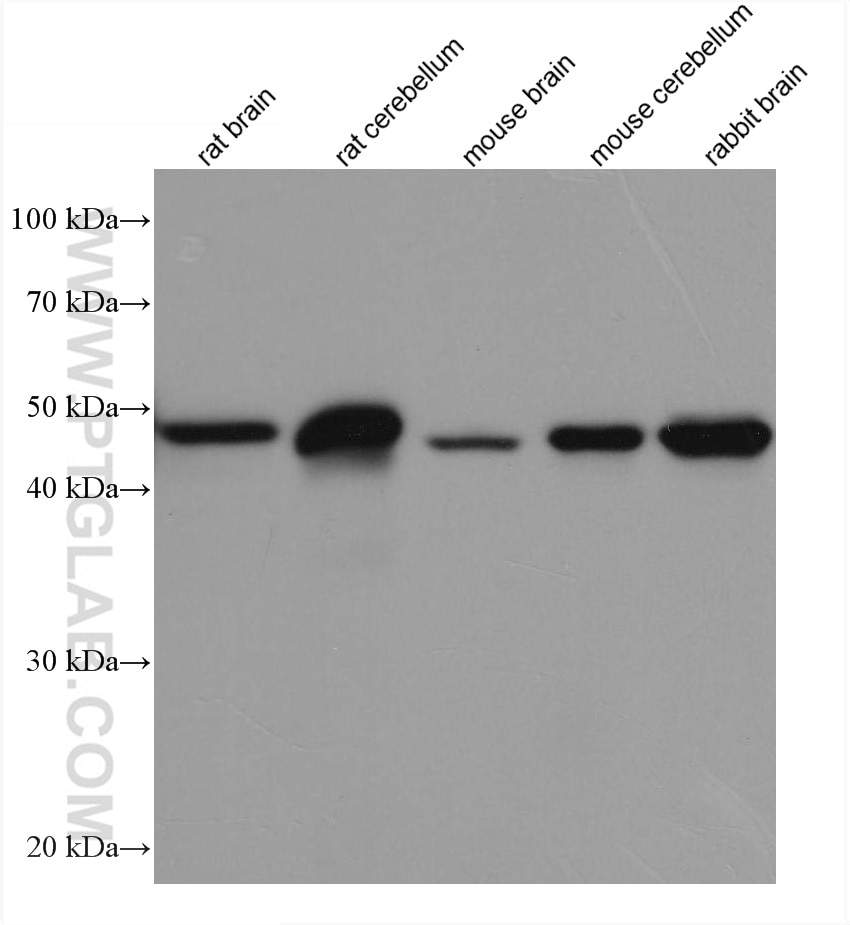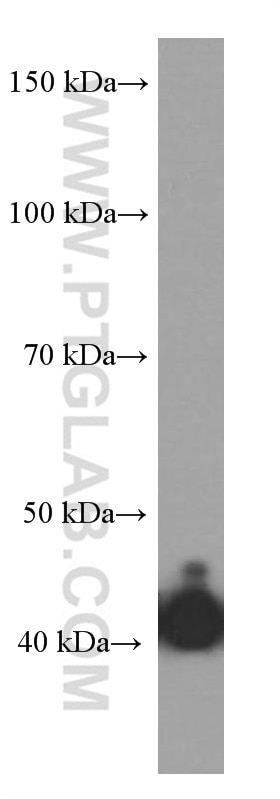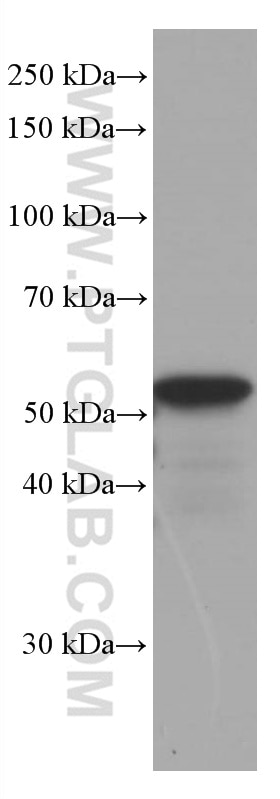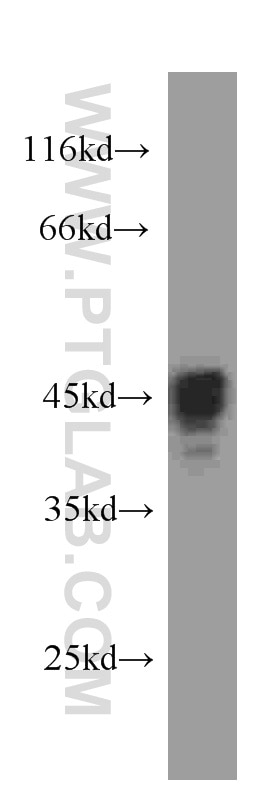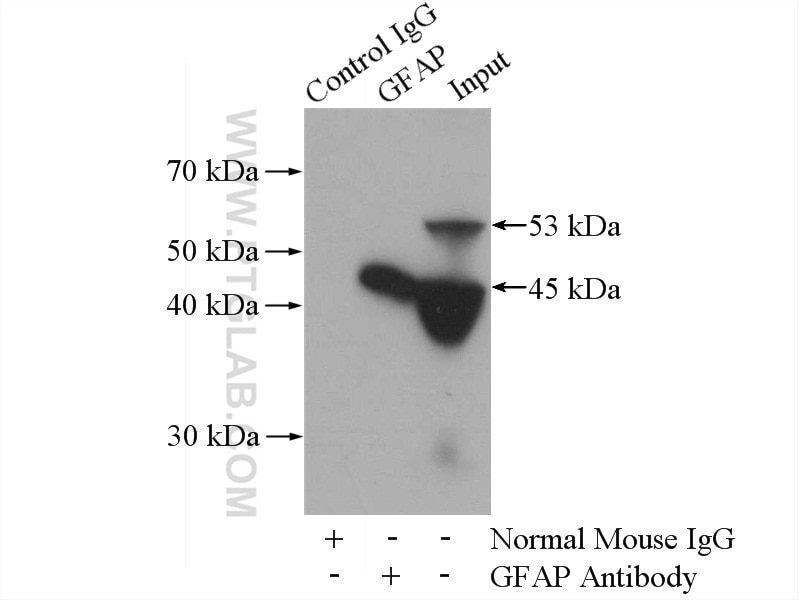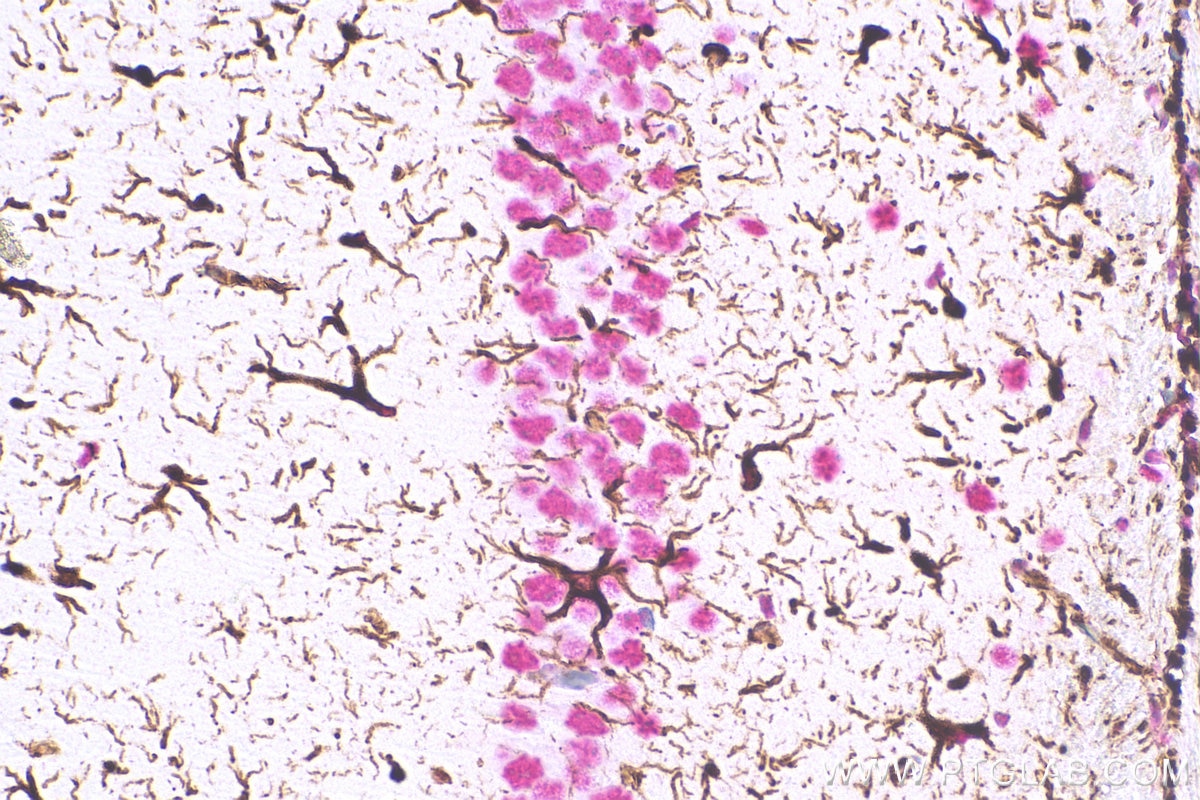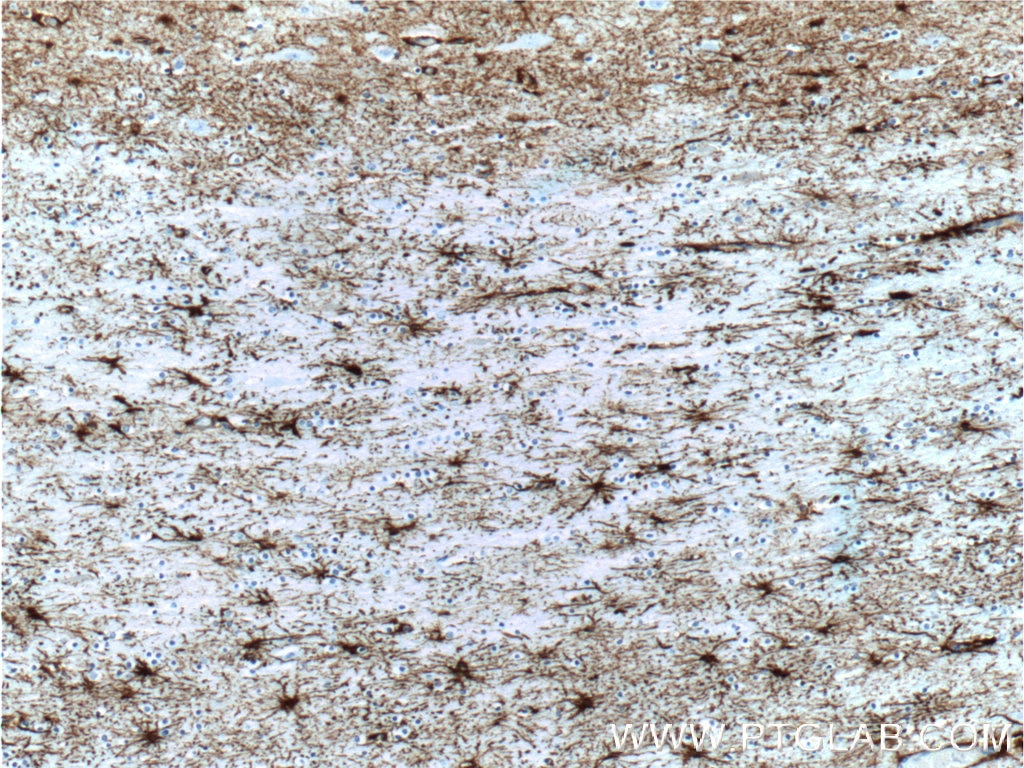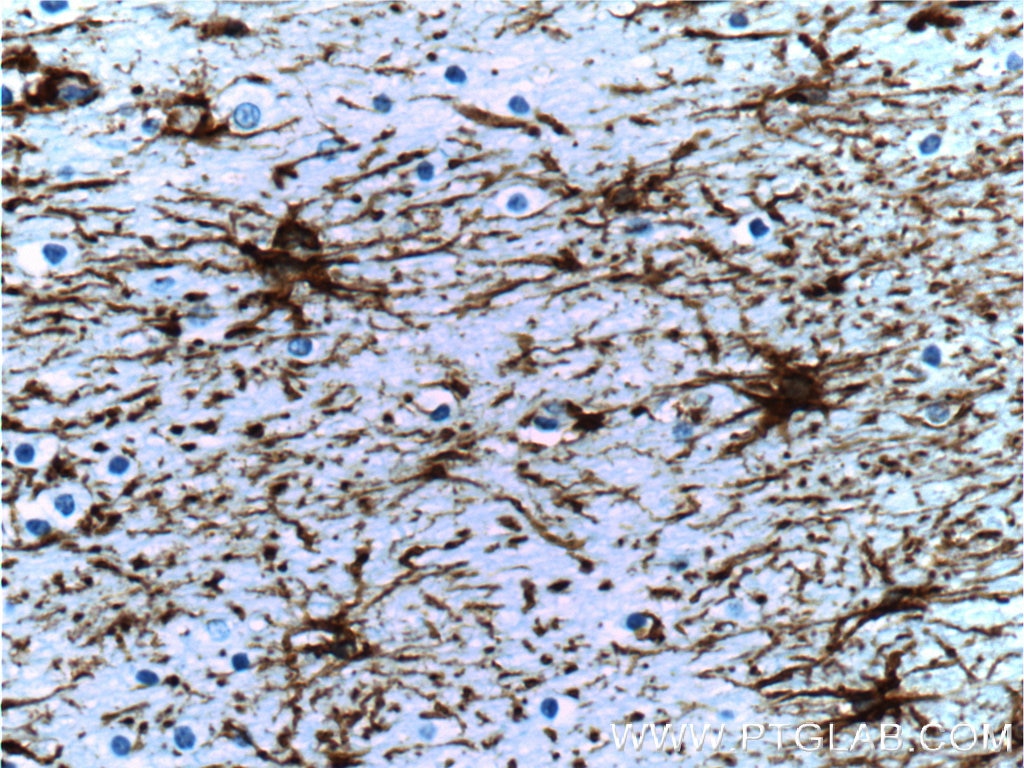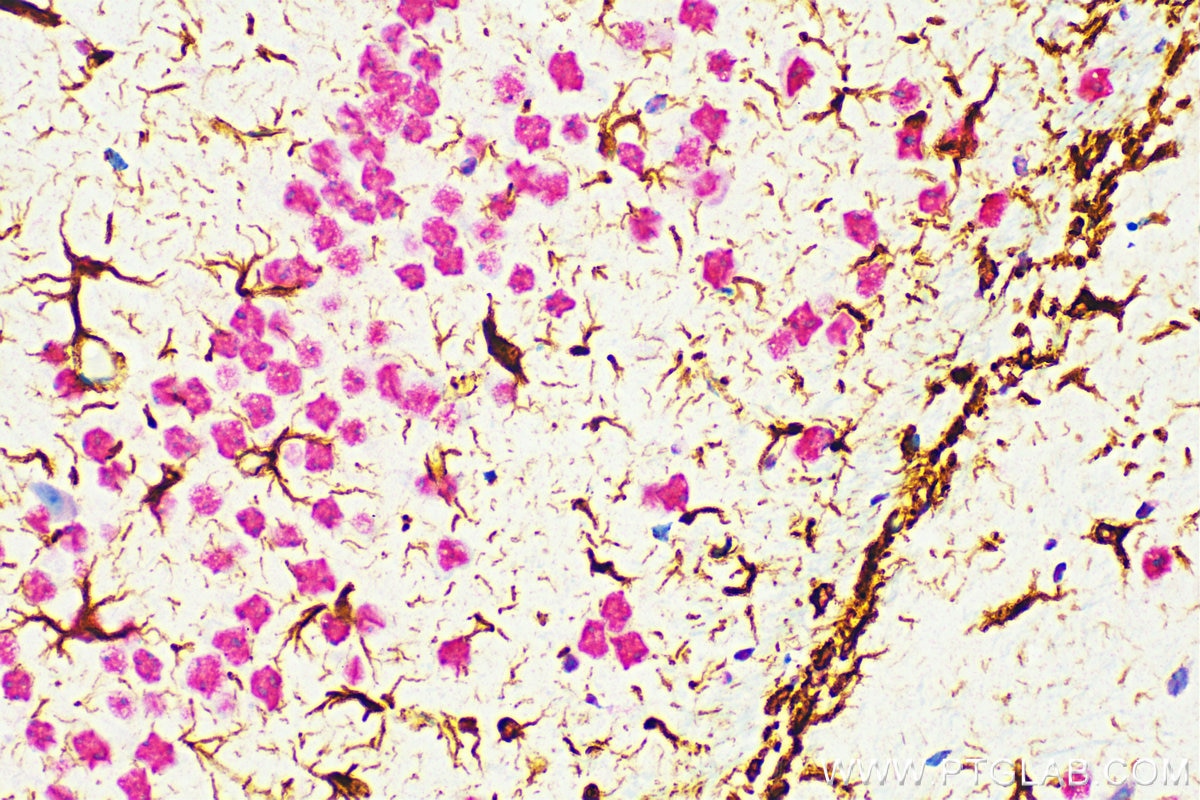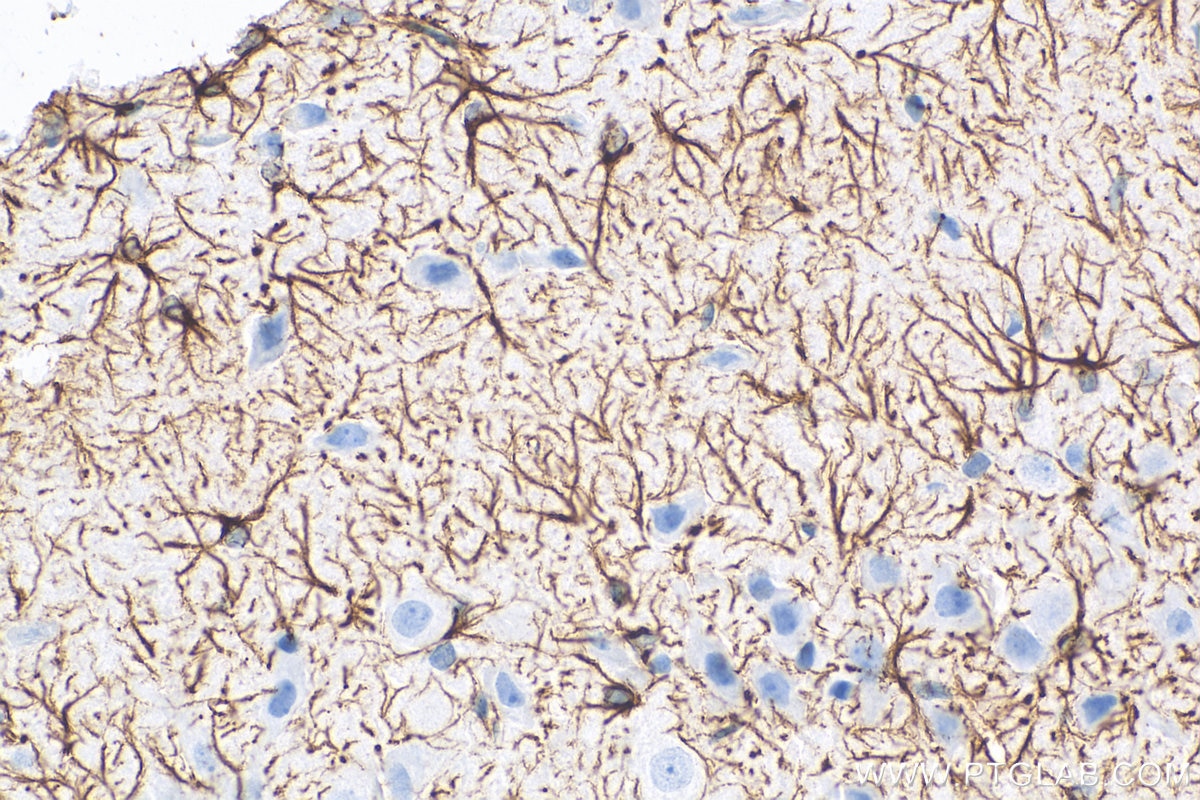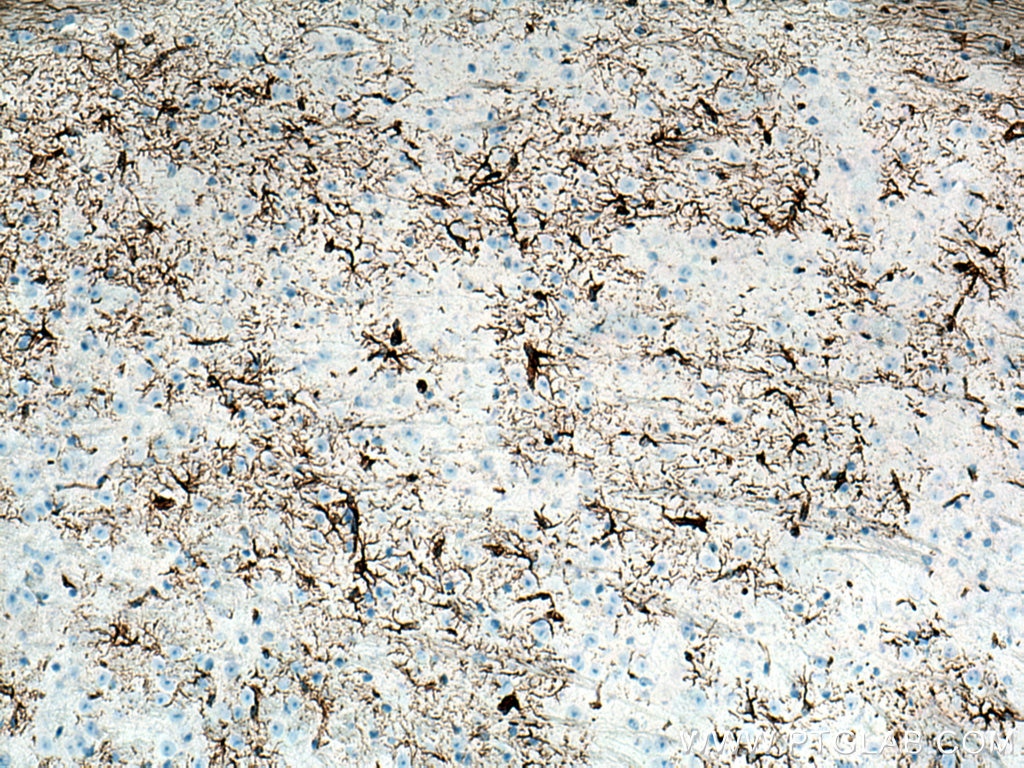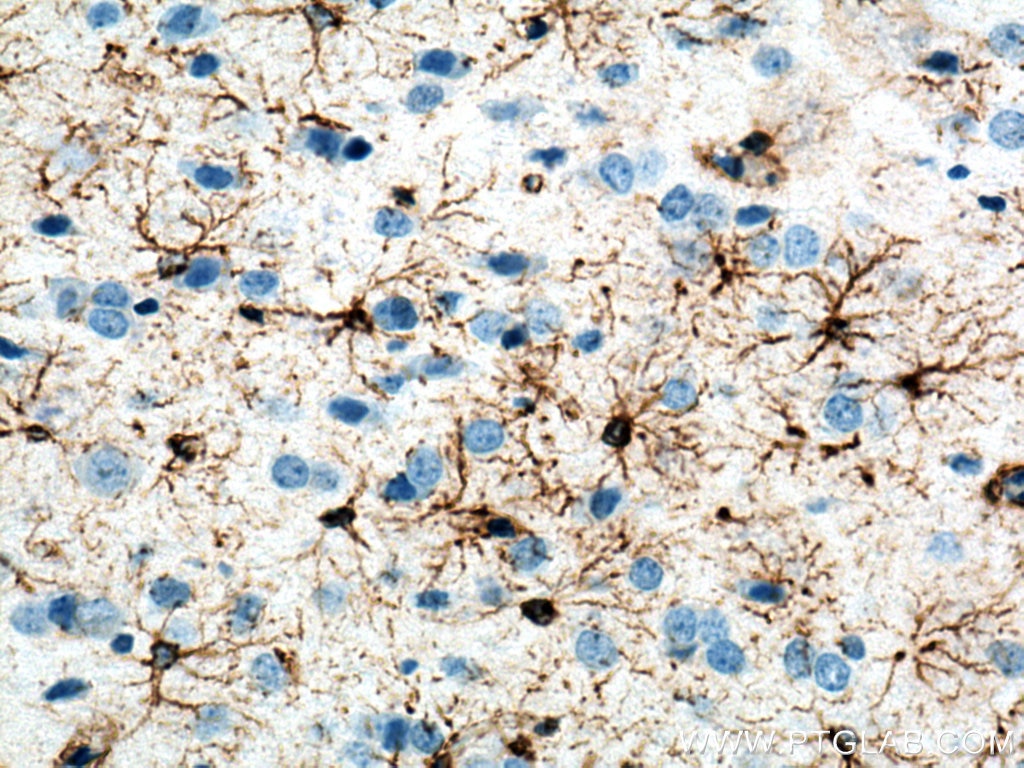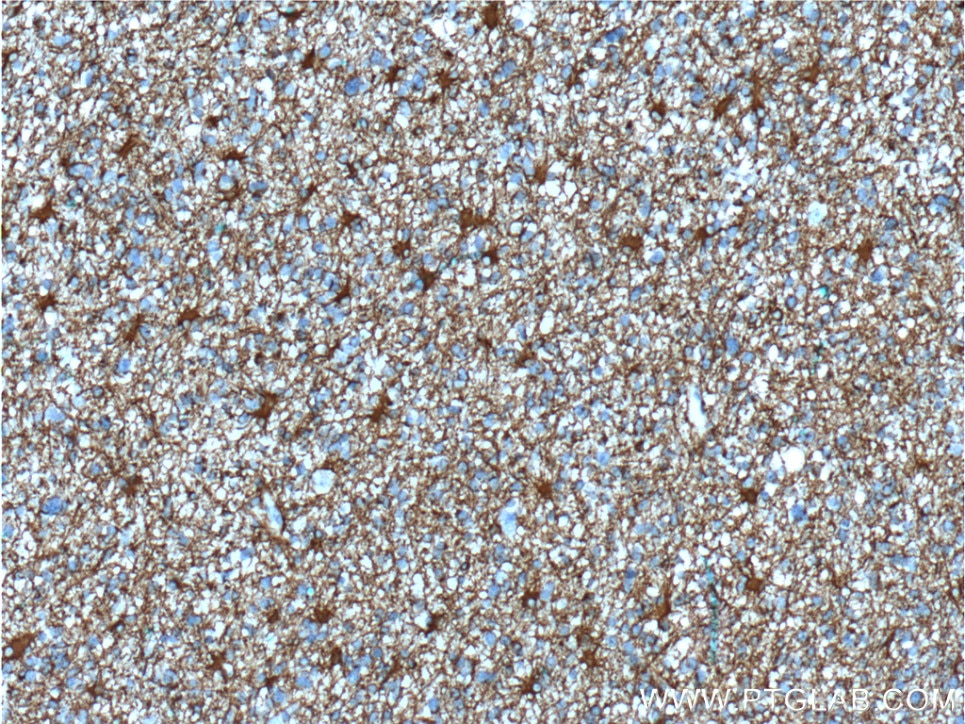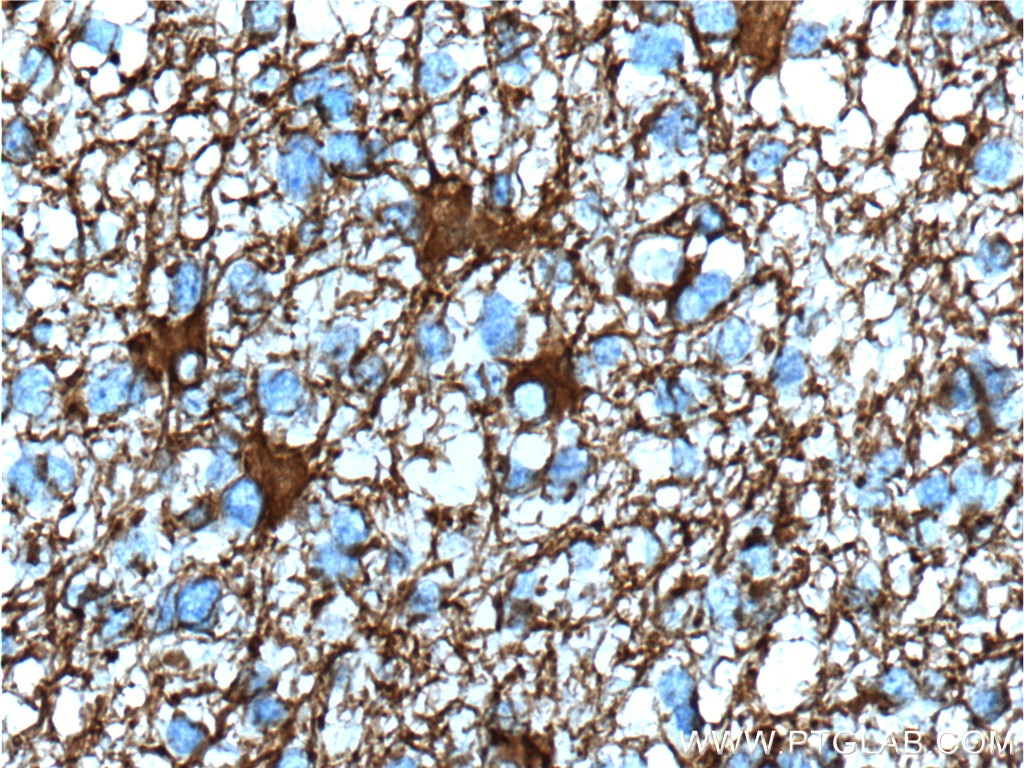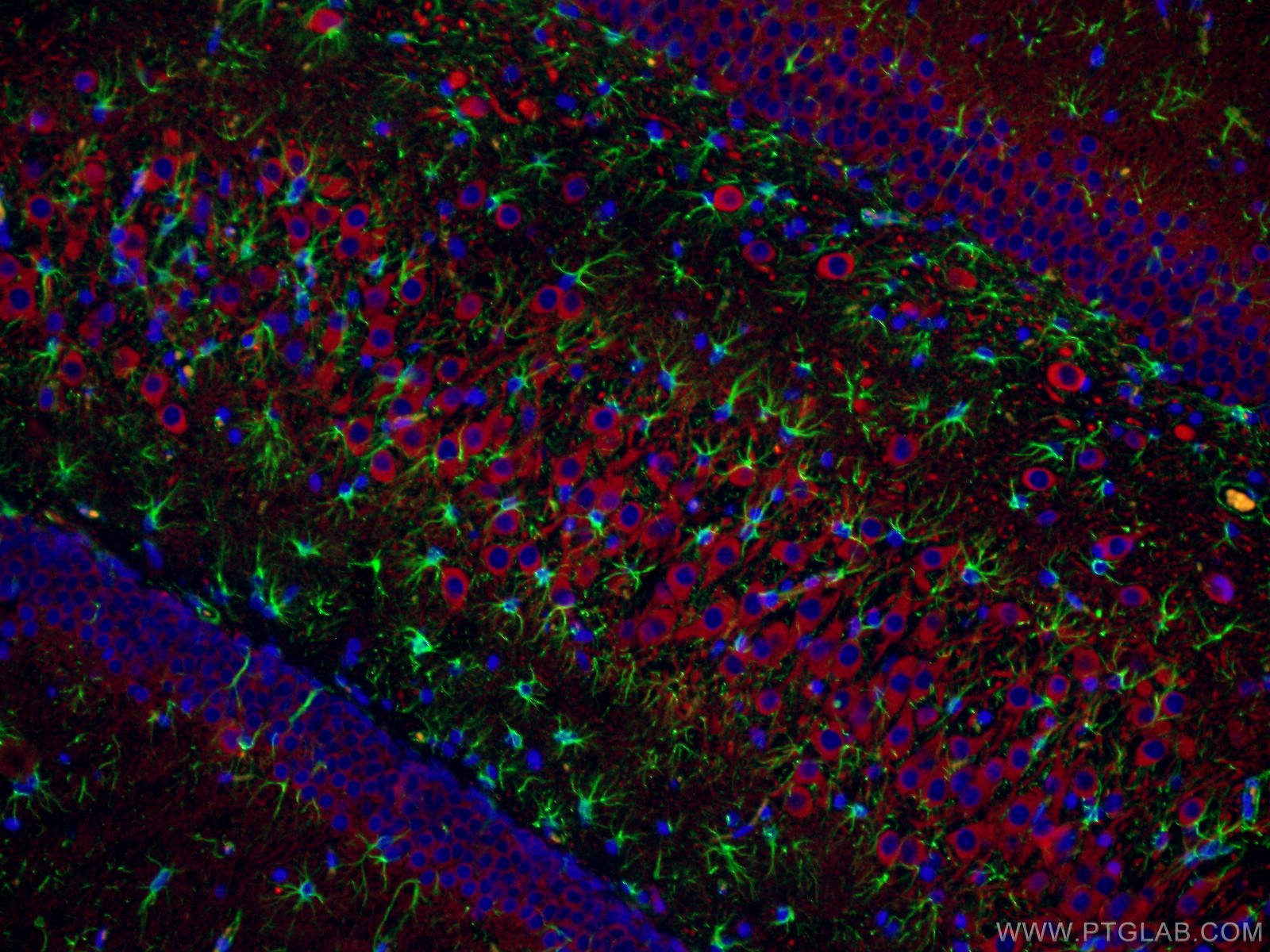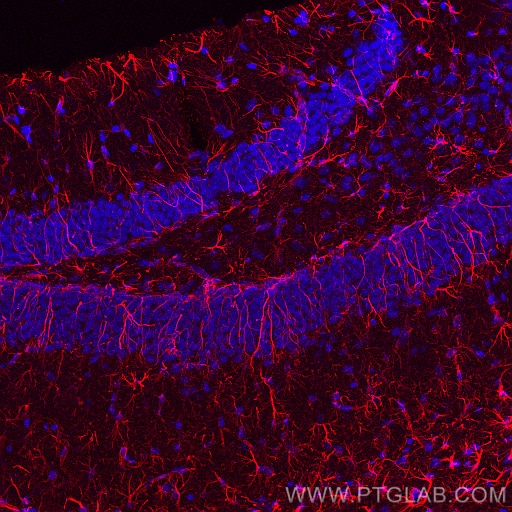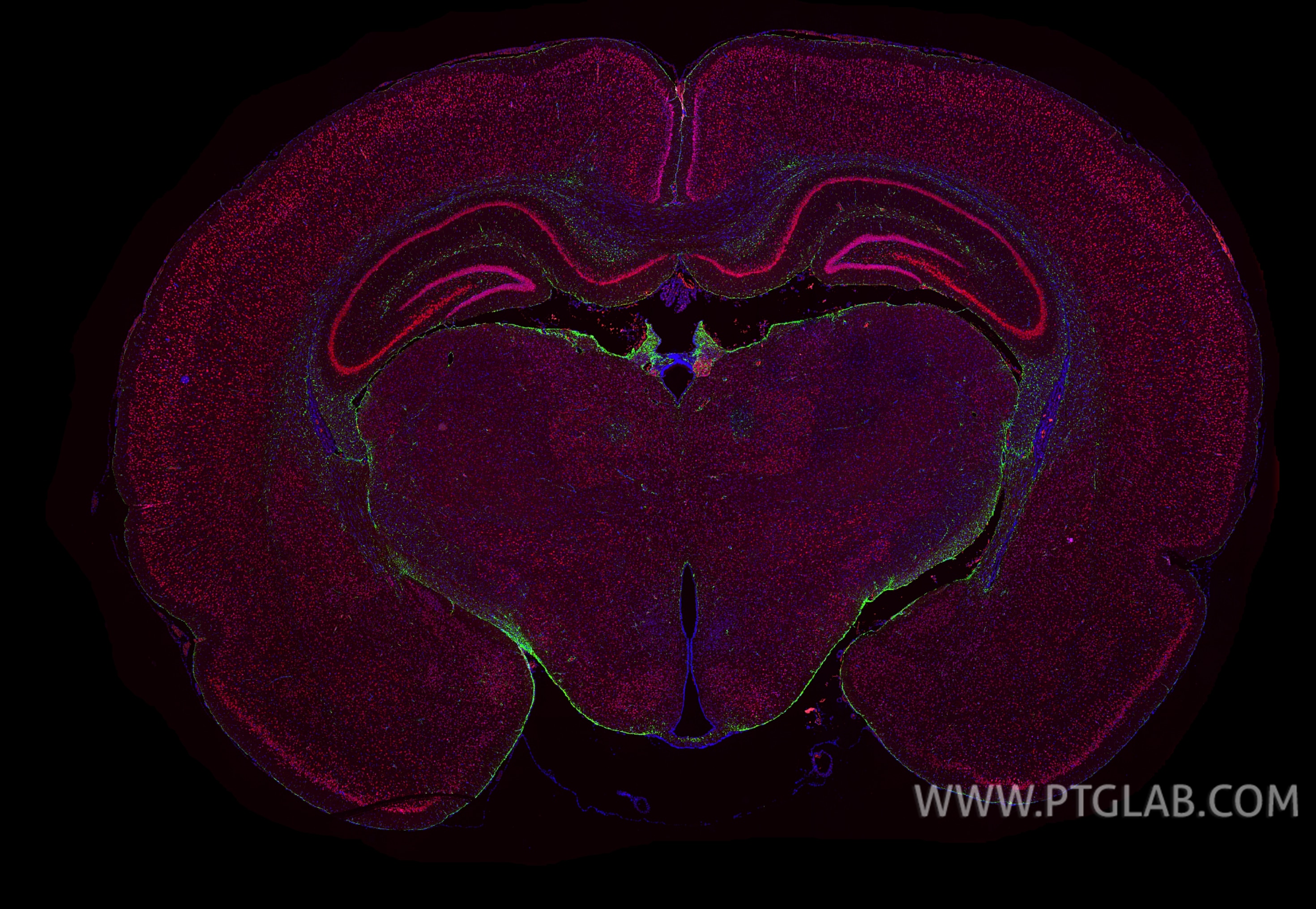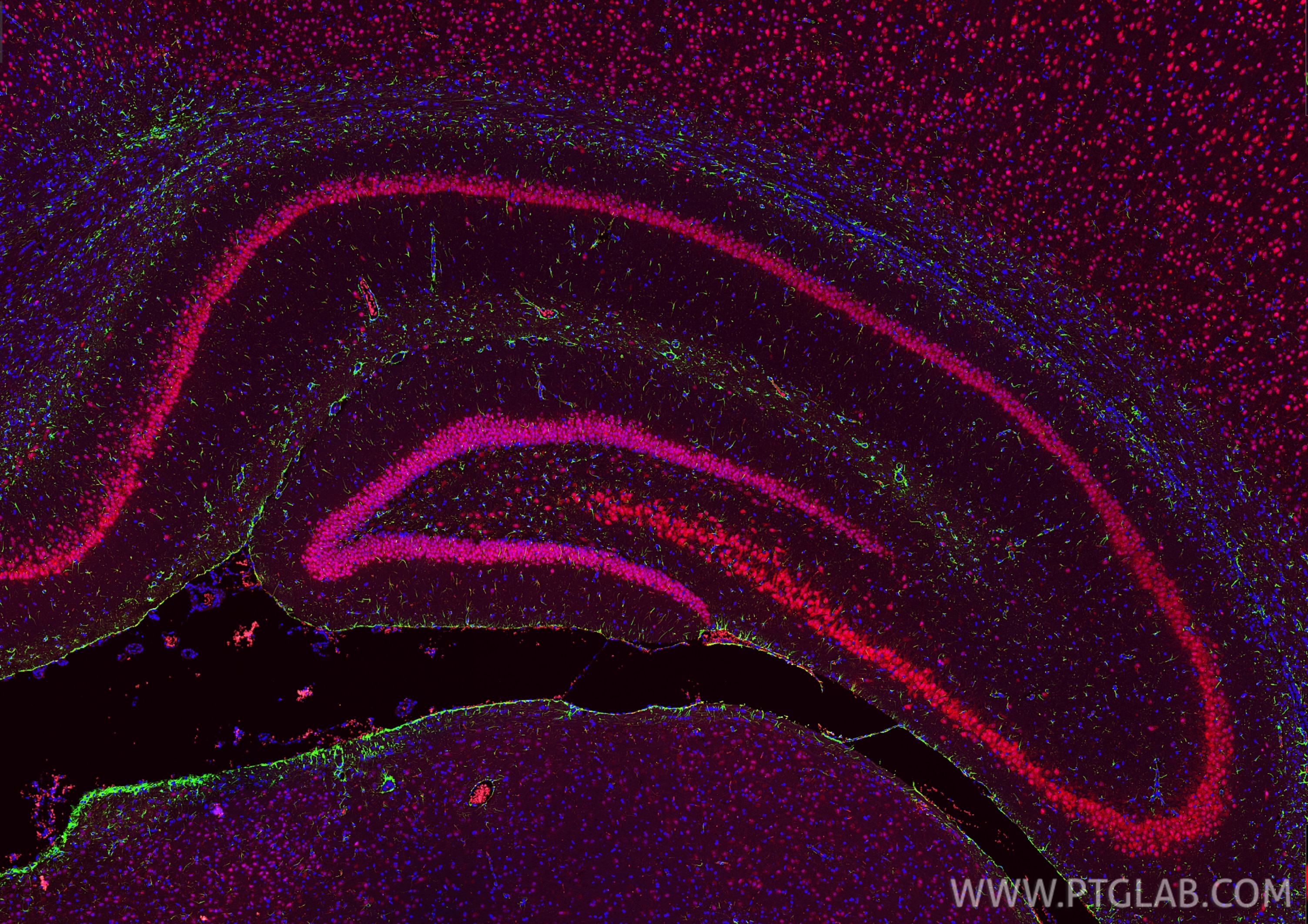GFAP Monoklonaler Antikörper
GFAP Monoklonal Antikörper für WB, IHC, IF-P, IP, ELISA
Wirt / Isotyp
Maus / IgG2a
Getestete Reaktivität
Hausschwein, human, Kaninchen, Maus, Ratte und mehr (1)
Anwendung
WB, IHC, IF-P, IP, Dot blot, ELISA
Konjugation
Unkonjugiert
CloneNo.
4B2E10
Kat-Nr. : 60190-1-Ig
Synonyme
Geprüfte Anwendungen
| Erfolgreiche Detektion in WB | Rattenhirngewebe, humanes Hirngewebe, Hausschwein-Hirngewebe, U-251-Zellen |
| Erfolgreiche IP | Maushirngewebe |
| Erfolgreiche Detektion in IHC | humanes Hirngewebe, humanes Gliomgewebe, Maushirngewebe, Rattenhirngewebe Hinweis: Antigendemaskierung mit TE-Puffer pH 9,0 empfohlen. (*) Wahlweise kann die Antigendemaskierung auch mit Citratpuffer pH 6,0 erfolgen. |
| Erfolgreiche Detektion in IF-P | Rattenhirngewebe, Maushirngewebe |
Empfohlene Verdünnung
| Anwendung | Verdünnung |
|---|---|
| Western Blot (WB) | WB : 1:5000-1:50000 |
| Immunpräzipitation (IP) | IP : 0.5-4.0 ug for 1.0-3.0 mg of total protein lysate |
| Immunhistochemie (IHC) | IHC : 1:500-1:10000 |
| Immunfluoreszenz (IF)-P | IF-P : 1:50-1:500 |
| It is recommended that this reagent should be titrated in each testing system to obtain optimal results. | |
| Sample-dependent, check data in validation data gallery | |
This antibody is not recommended for immunocytofluorescent assays. It is not suitable for frozen sections.
Veröffentlichte Anwendungen
| WB | See 69 publications below |
| IHC | See 23 publications below |
| IF | See 149 publications below |
Produktinformation
60190-1-Ig bindet in WB, IHC, IF-P, IP, Dot blot, ELISA GFAP und zeigt Reaktivität mit Hausschwein, human, Kaninchen, Maus, Ratten
| Getestete Reaktivität | Hausschwein, human, Kaninchen, Maus, Ratte |
| In Publikationen genannte Reaktivität | human, Affe, Hausschwein, Kaninchen, Maus, Ratte |
| Wirt / Isotyp | Maus / IgG2a |
| Klonalität | Monoklonal |
| Typ | Antikörper |
| Immunogen | GFAP fusion protein Ag10452 |
| Vollständiger Name | glial fibrillary acidic protein |
| Berechnetes Molekulargewicht | 432 aa, 50 kDa |
| Beobachtetes Molekulargewicht | 45-52 kDa |
| GenBank-Zugangsnummer | BC013596 |
| Gene symbol | GFAP |
| Gene ID (NCBI) | 2670 |
| Konjugation | Unkonjugiert |
| Form | Liquid |
| Reinigungsmethode | Protein-A-Reinigung |
| Lagerungspuffer | PBS with 0.02% sodium azide and 50% glycerol |
| Lagerungsbedingungen | Bei -20°C lagern. Nach dem Versand ein Jahr lang stabil Aliquotieren ist bei -20oC Lagerung nicht notwendig. 20ul Größen enthalten 0,1% BSA. |
Hintergrundinformationen
Function
GFAP (Glial fibrillary acidic protein) is a type III intermediate filament (IF) protein specific to the central nervous system (CNS). GFAP is one of the main components of the intermediate filament network in astrocytes and has been proposed as playing a role in cell migration, cell motility, maintaining mechanical strength, and in mitosis.Tissue specificity
GFAP is expressed in central nervous system cells, predominantly in astrocytes. GFAP is commonly used as an astrocyte marker. However, GFAP is also present in peripheral glia and in non-CNS cells, including fibroblasts, chondrocytes, lymphocytes, and liver stellate cells (PMID: 21219963).Involvement in disease
- Mutations in GFAP lead to Alexander disease (OMIM: 203450), an autosomal dominant CNS disorder. The mutations present in affected individuals are thought to be gain-of-function.
- Upregulation of GFAP is a hallmark of reactive astrocytes, in which GFAP is present in hypertrophic cellular processes. Reactive astrogliosis is present in many neurological disorders, such as stroke, various neurodegenerative diseases (including Alzheimer's and Parkinson's disease), and neurotrauma.
Isoforms
Astrocytes express 10 different isoforms of GFAP that differ in the rod and tail domains (PMID: 25726916), which means that they differ in molecular size. Isoform expression varies during the development and across different subtypes of astrocytes. Not all isoforms are upregulated in reactive astrocytes.Post-translational modifications
Intermediate filament proteins are regulated by phosphorylation. Six phosphorylation sites have been identified in GFAP protein, at least some of which are reported to control filament assembly (PMID: 21219963).Cellular localization
GFAP localizes to intermediate filaments and stains well in astrocyte cellular processes.
Protokolle
| PRODUKTSPEZIFISCHE PROTOKOLLE | |
|---|---|
| WB protocol for GFAP antibody 60190-1-Ig | Protokoll herunterladen |
| IHC protocol for GFAP antibody 60190-1-Ig | Protokoll herunterladenl |
| IF protocol for GFAP antibody 60190-1-Ig | Protokoll herunterladen |
| IP protocol for GFAP antibody 60190-1-Ig | Protokoll herunterladen |
| STANDARD-PROTOKOLLE | |
|---|---|
| Klicken Sie hier, um unsere Standardprotokolle anzuzeigen |
Publikationen
| Species | Application | Title |
|---|---|---|
Brain Behav Immun l-Cysteine suppresses hypoxia-ischemia injury in neonatal mice by reducing glial activation, promoting autophagic flux and mediating synaptic modification via H2S formation. | ||
J Extracell Vesicles Extracellular vesicle-mediated delivery of circDYM alleviates CUS-induced depressive-like behaviours. | ||
Neuron UBQLN2-HSP70 axis reduces poly-Gly-Ala aggregates and alleviates behavioral defects in the C9ORF72 animal model. | ||
Clin Cancer Res A Histopathologic Correlation Study Evaluating Glymphatic Function in Brain Tumors by Multi-Parametric MRI | ||
Small A Multichannel Flexible Optoelectronic Fiber Device for Distributed Implantable Neurological Stimulation and Monitoring. |
Rezensionen
The reviews below have been submitted by verified Proteintech customers who received an incentive for providing their feedback.
FH B (Verified Customer) (01-05-2022) | Very clear and strong signal in WB with a right MW about 50 kD.
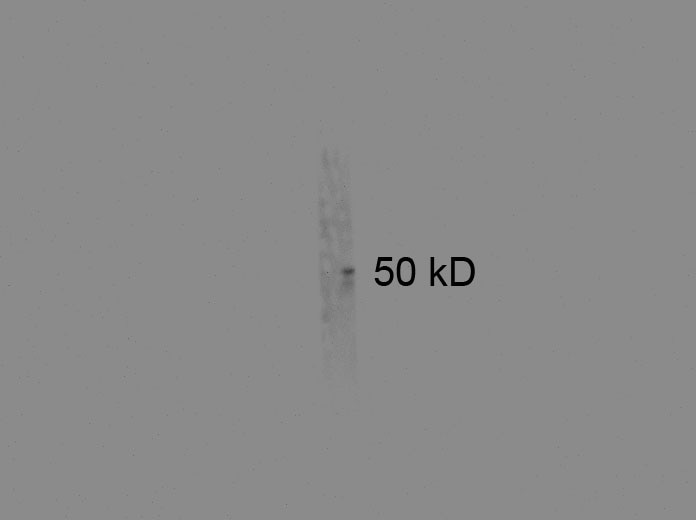 |
FH Mai (Verified Customer) (01-30-2020) | The antibody seemed to have some background. I will repeat the experiment with different dilutions and conditions to find an optimum dilution for this antibody.
|
FH George (Verified Customer) (08-27-2019) | This gave good staining for activated astrocytes in the 488 channel (1:500 secondary dilution) however there was also significant endogenous background staining which made analysis difficult.
|
FH Chintan (Verified Customer) (06-03-2019) | This antibody was used to detect Glial fibrillary acidic protein in primary mouse microglia cells using Western blot. Antibody worked quite well and gave a very specific band near 50 kDa.
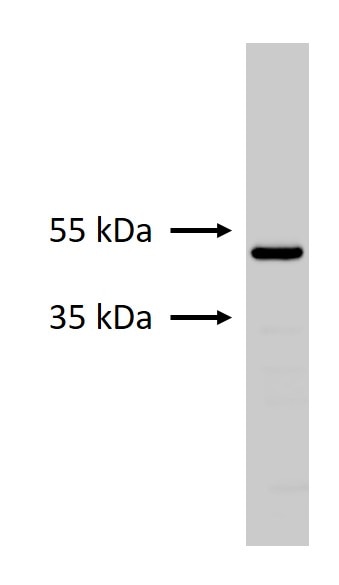 |
FH Di (Verified Customer) (12-18-2018) | Good antibody!
|
FH Lalitha (Verified Customer) (12-13-2018) | Reliable results.
|
FH Chandrakanth (Verified Customer) (12-06-2018) |
|
FH Emily (Verified Customer) (11-29-2018) |
|
